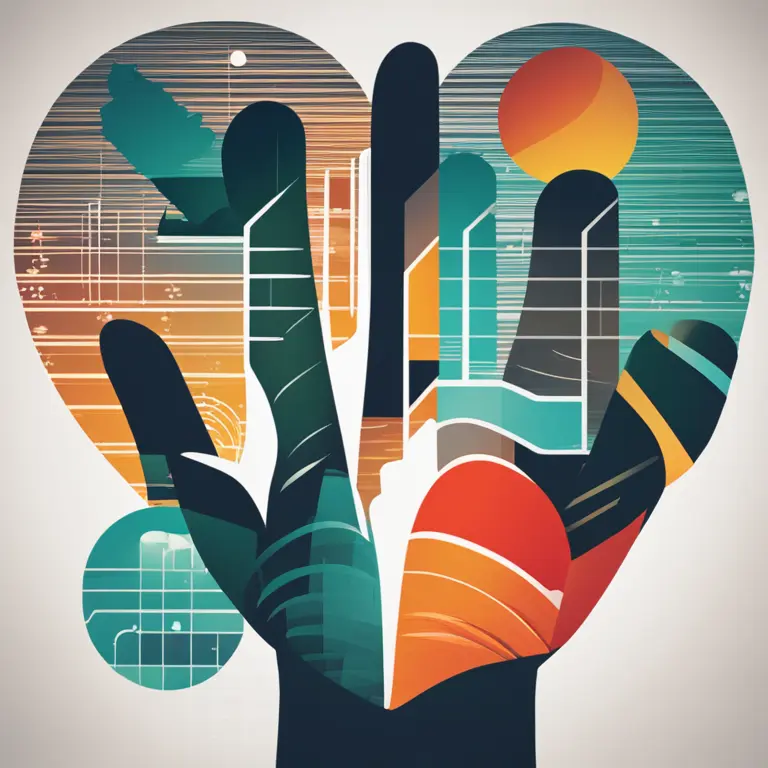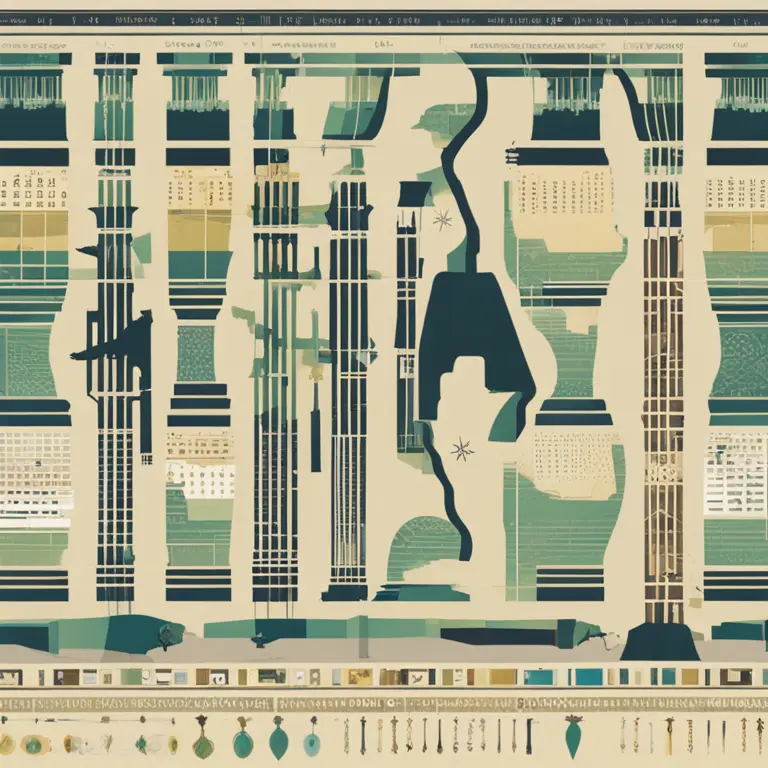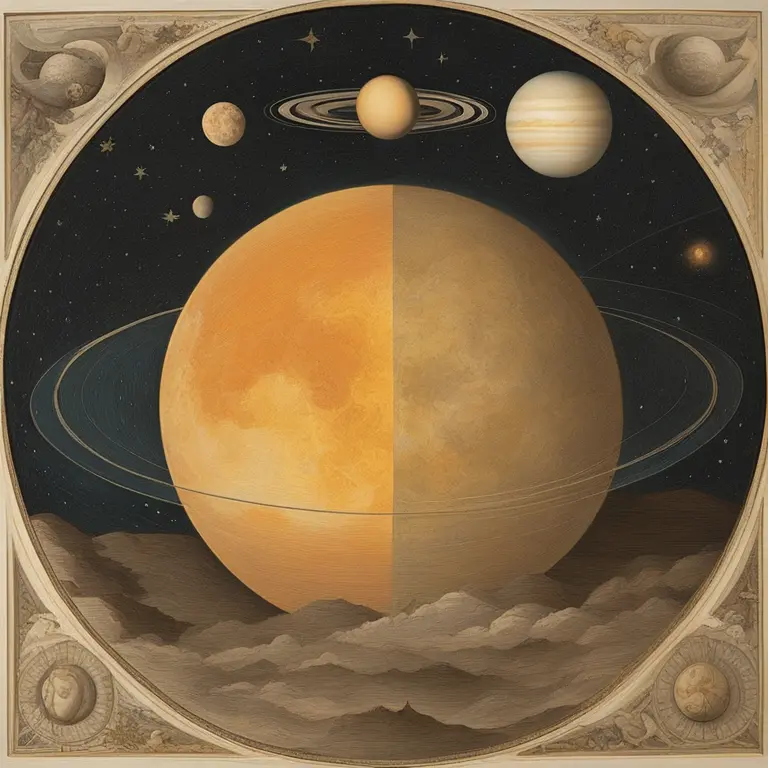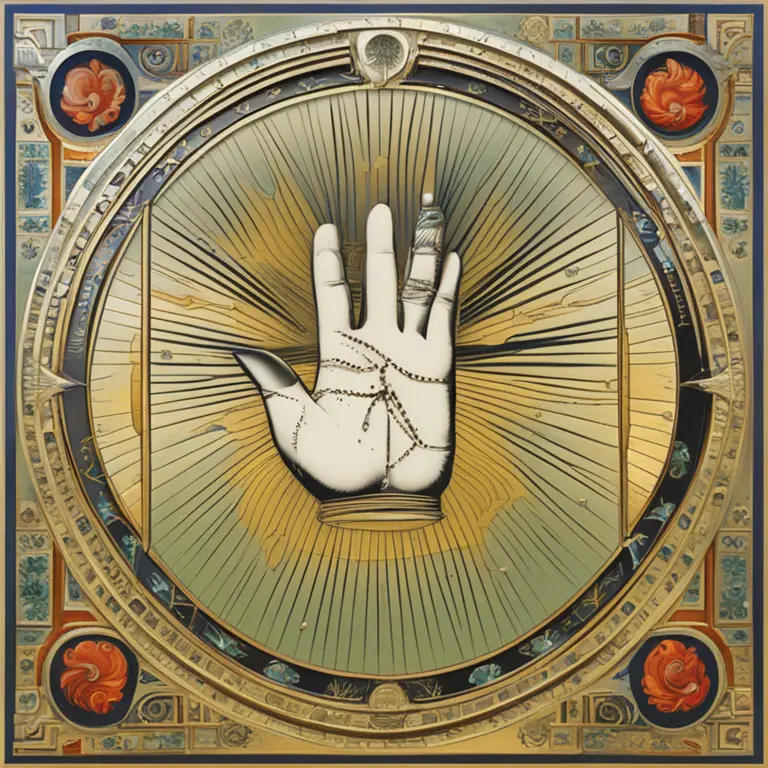
Exploring Palmistry: The Art of Hand Analysis
Delve into the world of palmistry with this informative guide on hand analysis, uncovering the secrets held within the lines and shapes of your hands.
article by Nora Pennington
Introduction to Palmistry
Palmistry, the ancient practice of interpreting the lines and features of the hand, is a window into the personality and potential life paths of an individual. This esoteric tradition, rooted in various cultural histories, has evolved alongside modern psychological theories, merging intuitive art with observational science. In this article, we embark on a journey through the foundational aspects of palmistry, examining its relevance in the digital age and how it continues to offer insights into our lives.

The Lines of Life, Heart, and Head
Central to palm reading are three major lines every palmist scrutinizes: the life line, heart line, and head line. The life line, curving around the base of the thumb, is often believed to reflect vitality and life changes. The heart line, typically found above the head line, provides insight into emotional affairs and relationships. Lastly, the head line below the heart line, signifies intellectual tendencies and the mental approach to problem-solving. The depth, length, and intersections of these lines are interpreted in multifaceted ways to infer various aspects of an individual's journey.

Mounts and Fingers
Beneath the fingers lie mounds or mounts, named after celestial bodies, each signifying different attributes. For instance, the Mount of Venus under the thumb illustrates love and passion, while the Mount of Mercury under the pinky finger correlates with communication skills. The shape and size of these mounts, in conjunction with the finger length and flexibility, enhance a palmist's reading, endowing it with a more tailored nuance concerning the individual's character and potential prospects.

Marks and Symbolism
Not all hands are etched with clear lines alone. Various marks like crosses, stars, or chains add layers of complexity to a reading. For example, a star on the Mount of Apollo is traditionally associated with fame, but its interpretation can vary depending on the hand's overall context. The art of palmistry revolves around interpreting these symbols within the larger tapestry of the hand's topography, merging insight with the symbolism ascribed throughout history.

Technological Impact and Palmistry Dynamics
As technology advances, palmistry also experiences a modern metamorphosis. High-resolution scanning and software analysis provide new avenues for hand analysts to execute their craft. Despite these technological assists, the intimate knowledge and intuitive understanding of an experienced palmist remain irreplaceable. The personal exchange, tactile engagement, and wisdom of a practiced reader will continue to bear significance as digital and personal readings coexist.
Approach to Learning Palmistry
For those intrigued by this practice and looking to delve into palmistry, various resources are available. Hand analysis workshops, online courses, and literature are more accessible than ever, with a growing interest in personal spiritual development. As with any discipline, consistent study, practice, and an open mind are critical. Seasoned practitioners often advise starting with one's hand, learning to read the story it tells, and progressively expanding knowledge to read for others.
Published: 1/11/2024
Modified: 1/12/2024
More predictions
Come back here soon to learn more about yourself and your future


Can We Trust Palmistry?
Delving into the realm of palmistry, this article examines its credibility and place in contemporary spiritual practices.


Can Palmistry Predict Your Path Incorrectly?
Delving into the accuracy of palm readings, this article examines whether palmistry can lead to incorrect predictions about one's life and destiny.


Palmistry: The Historical Overview
Delve into the dawn of palmistry and trace its journey through the corridors of time, uncovering the roots of this ancient practice.